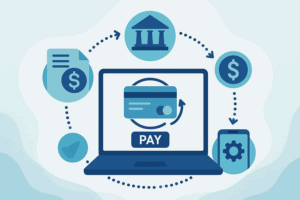
The first 100 days of a startup can make or break its future. It’s the phase where ideas meet reality, where founders go from planning to executing, and where early decisions can compound into long-term success—or regret.
For new entrepreneurs, navigating this period with clarity, agility, and structure is critical. While every startup journey is unique, there are foundational strategies that consistently set ventures up for growth. Here’s how to make the most of your first 100 days.
Day 1–30: Define, Validate, and Build
Clarify the Problem You’re Solving
It might sound basic, but too many startups launch without truly understanding their users’ pain points. During your first month, dig deep. Talk to potential customers. Ask hard questions. What frustrates them? What are they currently using—and why isn’t it enough?
Your goal isn’t just to build a product. It’s to solve a real, pressing problem better than anyone else.
Validate with Minimal Viable Products (MVPs)
Instead of building a fully polished version, focus on developing a Minimum Viable Product. This allows you to test key features with real users and gather feedback before over-investing time or money.
Use tools like landing pages, email capture forms, or even prototypes on platforms like Figma or Webflow to gauge interest and demand.
Set Clear Goals and KPIs
Even in the chaos of early-stage work, clarity is your superpower. Establish clear, measurable goals: customer sign-ups, beta users, churn rates, and time-to-conversion. These will guide your decision-making as you iterate.
Day 31–60: Acquire, Analyze, and Adjust
Start Building Awareness
You don’t need a full-blown marketing campaign yet, but you do need visibility. Use early traction channels like LinkedIn, Reddit, Product Hunt, or niche communities in your space.

Focus on organic engagement first—it’s a fast way to test messaging and find early adopters.
Prioritize Feedback Loops
Get obsessive about feedback. Talk to users weekly. Analyze behavior. What features are sticky? Where do users drop off? Are you solving the right problem—or just an interesting one?
This is where the feedback from your MVP becomes gold. Adjust your roadmap based on actual use, not assumptions.
Build Strategic Partnerships
Identify tools, platforms, or communities that serve your audience and explore collaboration. This could mean cross-promotions, co-marketing, or shared content. Platforms like Casiny, which specialize in user engagement and gamified experiences, have shown how early ecosystem integration can supercharge visibility and retention.
Day 61–100: Optimize, Systematize, and Scale
Refine Your Onboarding Process
First impressions matter. Make sure users immediately understand the value of your product. Streamline onboarding. Remove friction. Show your value prop clearly in the first session or interaction.
Invest in Analytics and Automation
Set up your growth stack. Use tools like Mixpanel, Segment, or HubSpot to track metrics that matter. Begin automating repetitive tasks—from email onboarding to support follow-ups—so you can focus on strategy, not operations.
Start Thinking About Scale
At this stage, you’re looking for signs of product-market fit. If users are returning, referring others, and engaging deeply, it may be time to consider funding, expanding the team, or scaling your customer retention strategy.

Just remember: scale what’s working. Don’t pour fuel on a fire you can’t control.
Final Thoughts: Lay the Groundwork, Play the Long Game
The startup journey is a marathon—one that begins with a furious sprint. The first 100 days are your chance to validate your vision, listen to your users, and start building momentum.
Stay flexible, stay focused, and lean on tools, platforms, and partnerships that align with your mission. Whether you’re launching a fintech app, a lifestyle brand, or even a crypto-powered platform like Casiny, the early days are where your startup DNA is formed.
Get those days right, and you’ll be building from a foundation that lasts.















